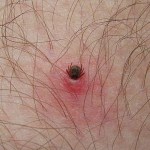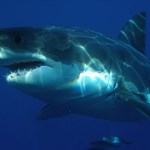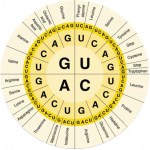protein
When blood sugar concentrations are elevated, humans run the risk of glucose binding to proteins in the blood and causing the irreversible formation of advanced glycation end products (AGE). Once formed, AGEs can bind to their receptor (RAGE) and stimulate inflammation and oxidative stress. This pathological signaling can be stopped by pieces of the RAGE protein that break off and form a soluble version called sRAGE. These soluble versions of RAGE are good because they can bind excess AGEs and prevent their effects.
A new study published in the American Journal of…
Image of baboon with offspring By RADION Imaginery / Kamil Wencel (RADION Imaginery / http://imaginery.radion.org/) [Attribution], via Wikimedia Commons
Malnutrition during pregnancy is a major global health issue that leads to restricted growth of developing fetuses making them more prone to death and disease. In fact, babies born from poorly nourished mothers are more likely to develop obesity, metabolic syndrome and cardiovascular disease as adults.
Researchers from the University of Colorado and University of Texas Health Sciences Center teamed up to examine whether the…
Cartoon image from www.teenwritersblog.com
Physiologist Laurie Goodyear (Joslin Diabetes Center, Harvard Medical School, MA) and her colleagues recently published a study in the American Journal of Physiology that shows how overexpressing a protein can increase exercise capacity. The protein of interest was tribbles homolog 3 (TRB3), which is a mammalian form of the tribbles protein found in fruit flies (aka: Drosophila). Prior to this study, data suggested that TRB3 plays a role in metabolism so Dr. Goodyear's team decided to examine this more closely in skeletal muscle, which is a major…
Image of a tick stealing a meal from: www2.outdoorchannel.com
Ticks are blood-sucking arthropods that can act as vectors for various diseases in both animals and humans. A recent article published in Frontiers in Zoology summarizes findings that suggest ticks may also be considered venomous ectoparasites. For example, Ixodes holocyclus is a species of Australian tick whose saliva can induce paralysis in humans and animals. According to the new article, about 8% of known tick species can induce paralysis. Ornithodoros savignyi ticks even secrete a lethal…
Image of a great white shark from Wikimedia Commons.
Dr. Michael Stanhope from Cornell University has discovered that great white sharks actually share more proteins involved in metabolism and biochemistry in common with humans than zebrafish, a common fish model used in biomedical research. They made this discovery by sequencing the transcriptome of a heart isolated from a great white shark. I find it fascinating that sharks have more proteins in common with mammals than with bony fish, even though sharks and bony fish are not very closely related.
Source:
Cornell University Press
Thanks to the internet, you can find out your pirate name and your Jersey Shore name, and now thanks to the EMBL-EBI learning tools, you can find your protein name too!
When you type your name into the box, the program reads the letters of your name as if they were the single-letter codes for amino acids. Since there are only 20 amino acids, if you have a B, J, O, U, X, or Z in your name the program reads it as "X" which just means any amino acid could go in that spot.
The amino acids are then translated back into one of the possible three-letter DNA codes for each amino acid, and that DNA…
Our lab has a new paper coming out this week in the Journal of Molecular Biology (JMB):
The Glutamate Effect on DNA Binding by Pol I DNA Polymerases: Osmotic Stress and the Effective Reversal of Salt Linkage
I'm going to talk about a few highlights here, but if you actually want the full article, say so in the comments or email me directly and I'll send you a reprint, because unless you or your university has a subscription to the Journal of Molecular Biology, you'll only be able to see the abstract.
The paper comes primarily from the Ph.D. dissertation of Daniel Deredge and osmotic stress…
These cells look like fairly typical bone cells. They appear to be connected to each other by thin branch-like projections and are embedded in a white matrix of fibres. At their centres are dark red spots that are probably their nuclei. But it's not their appearance that singles out these extraordinary cells - it's their source. You're looking at the bone cells of a dinosaur.
They come from an animal called Brachylophosaurus, a duck-billed dinosaur that lived over 80 million years ago. By looking at one of its thigh bones, Mary Schweitzer from North Carolina State University has managed to…
Instead of enjoying a sunny summer day today, or partying with SciBlings in New York, I'm staring out my window watching the rain. Inspiration hit! What about searching for August?
Folks, meet the HFQ protein from E. coli. I found this lovely molecule by doing a multi-database search at the NCBI with the term 'August'.
HFQ is a lovely protein with six identical subunits, that's involved in processing small RNA molecules and is homologous to some eucaryotic proteins that work in RNA splicing (1).
Do you see the blue loopy regions in the center of the structure? Those are positively…
What the heck has this world come to? All over the internet, this picture of an Orangutan trying to fish with a stick has been shown:
But what's the story behind this? Is this evidence that humans are not unique among the Great Apes as tool-users?
Not quite. According to the Daily Mail, this is an orangutan that had extensive exposure to humans; this jungle setting is actually where they reintroduce orangutans into the wild from zoos, private homes and (yikes) butcher shops. This particular orangutan actually doesn't successfully know how to fish; this was something he copied from nearby…




